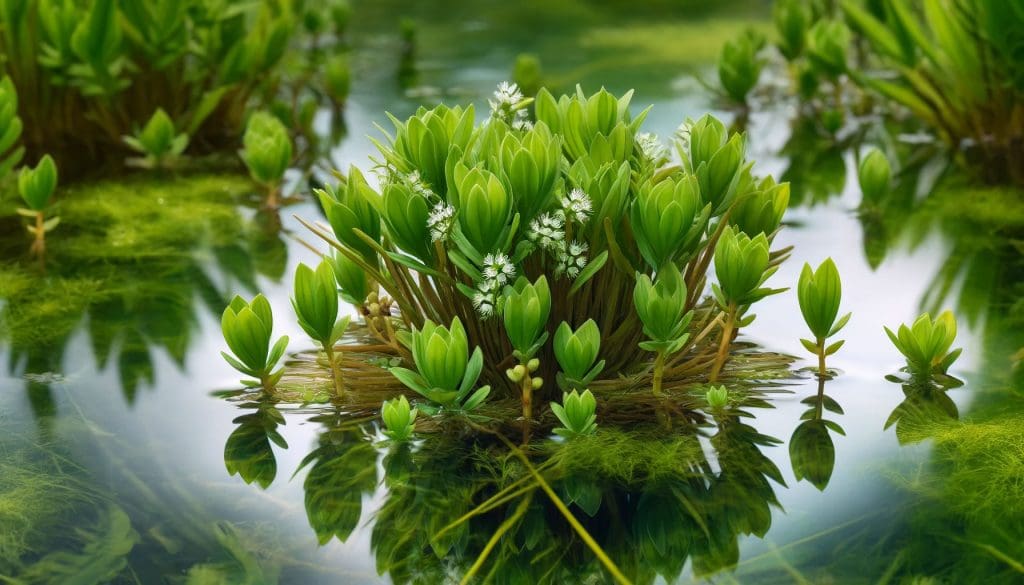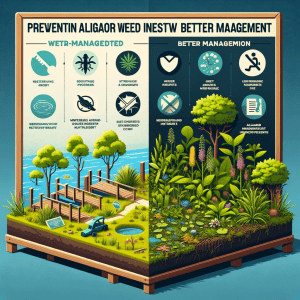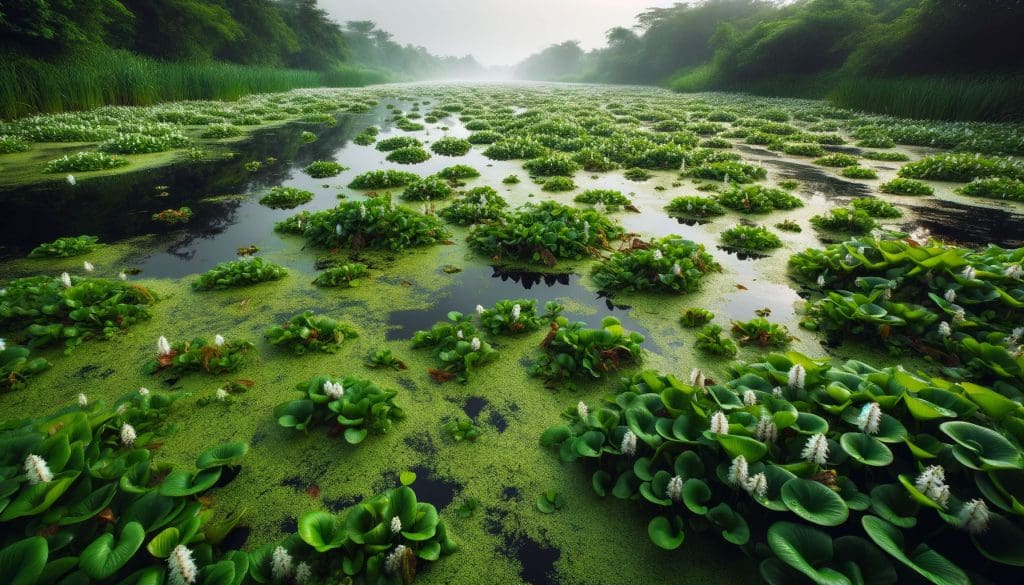
Introduction to Alligator Weed
Alligator weed (Alternanthera philoxeroides) is a pervasive and resilient aquatic plant that poses significant challenges to water ecosystems and agricultural lands. This article aims to provide an in-depth understanding of alligator weed, covering its characteristics, impact, management strategies, and more.
What is Alligator Weed?
Origin and Distribution
 Alligator weed is a perennial herbaceous plant native to South America, particularly in regions like Argentina, Brazil, and Paraguay. Over time, it has spread to various parts of the world, including North America, Australia, Asia, and Africa, mainly through water currents, human activity, and the trade of aquatic plants.
Alligator weed is a perennial herbaceous plant native to South America, particularly in regions like Argentina, Brazil, and Paraguay. Over time, it has spread to various parts of the world, including North America, Australia, Asia, and Africa, mainly through water currents, human activity, and the trade of aquatic plants.
Physical Characteristics
Alligator weed can be easily identified by its distinctive features:
- Stems: Hollow, buoyant stems that can float on water or sprawl across the ground.
- Leaves: Opposite, lance-shaped leaves that are bright green and can grow up to 10 cm long.
- Flowers: Small, white, clover-like flowers that appear in clusters at the leaf nodes.
Growth Habits
Alligator weed is highly adaptable and can grow in a variety of conditions, including:
- Aquatic environments: Lakes, rivers, ponds, and wetlands.
- Terrestrial environments: Damp soil, agricultural fields, and along roadsides.
The Impact of Alligator Weed
Environmental Impact
Alligator weed poses several ecological challenges:
- Displacement of Native Species: It competes aggressively with native aquatic plants, leading to reduced biodiversity.
- Water Flow Obstruction: Dense mats of alligator weed can block waterways, impede water flow, and increase the risk of flooding.
- Habitat Alteration: It alters the natural habitat, affecting fish, birds, and other aquatic organisms.
Agricultural Impact
In agricultural settings, alligator weed can:
- Reduce Crop Yields: It competes with crops for nutrients, water, and light, leading to lower productivity.
- Impede Irrigation: Dense growth can obstruct irrigation channels, making water management difficult.
- Harbor Pests and Diseases: It can provide a breeding ground for pests and diseases that affect crops.
Management and Control of Alligator Weed
Mechanical Control
Mechanical control methods include:
- Manual Removal: Physically pulling out the weed, which is labor-intensive but effective for small infestations.
- Mechanical Harvesting: Using specialized equipment to cut and remove the weed from water bodies.
Chemical Control
Chemical control involves the use of herbicides:
- Selective Herbicides: Chemicals that target alligator weed while minimizing damage to native plants.
- Non-Selective Herbicides: Broad-spectrum chemicals used in severe infestations but can harm other vegetation.
Biological Control
Biological control uses natural predators and pathogens:
- Insects: The alligator weed flea beetle (Agasicles hygrophila) and alligator weed thrips (Amynothrips andersoni) are effective biological control agents.
- Pathogens: Fungal pathogens that specifically target alligator weed.
Integrated Management
An integrated management approach combines mechanical, chemical, and biological methods to achieve sustainable control of alligator weed. This approach considers the specific conditions of the infestation and aims to minimize environmental impact.
Research and Studies on Alligator Weed
Scientific Research
 Extensive research has been conducted to understand the biology and ecology of alligator weed:
Extensive research has been conducted to understand the biology and ecology of alligator weed:
- Growth Patterns: Studies on how environmental factors like temperature, light, and nutrient availability affect its growth.
- Genetic Studies: Research on the genetic diversity of alligator weed populations to develop targeted control strategies.
- Impact Assessment: Evaluating the ecological and economic impact of alligator weed in different regions.
Innovations in Management
Recent innovations in management practices include:
- Precision Herbicide Application: Using drones and GPS technology to apply herbicides more accurately.
- Biological Control Optimization: Enhancing the effectiveness of biological control agents through selective breeding and habitat management.
Personal Experiences with Alligator Weed
Case Studies
Several case studies highlight the challenges and successes in managing alligator weed:
- Australia: Successful biological control programs using flea beetles have significantly reduced infestations in certain areas.
- United States: Integrated management approaches combining herbicides and mechanical removal have proven effective in Florida and Louisiana.
Expert Interviews
Interviews with experts in aquatic plant management provide valuable insights:
- Dr. Jane Smith, Ecologist: “Managing alligator weed requires a multifaceted approach. Understanding its biology and ecology is key to developing effective control strategies.”
- John Doe, Farmer: “Alligator weed has been a persistent problem on my farm. Integrated management has helped us keep it under control and protect our crops.”
FAQs and Troubleshooting
Common Questions
Q: How fast does alligator weed grow? A: Alligator weed can grow rapidly, forming dense mats within a few weeks under favorable conditions.
Q: Is alligator weed harmful to livestock? A: Yes, alligator weed can be toxic to livestock if consumed in large quantities, causing health issues.
Problem-Solving Tips
- Early Detection: Regular monitoring and early detection are crucial for effective management.
- Community Involvement: Engaging local communities in monitoring and control efforts can help manage infestations more effectively.
- Sustainable Practices: Implementing sustainable management practices that consider environmental impact and biodiversity conservation.
Conclusion
Alligator weed (Alternanthera philoxeroides) is a resilient and invasive aquatic plant that poses significant challenges to ecosystems  and agriculture. Effective management requires a combination of mechanical, chemical, and biological control methods, tailored to specific conditions and infestation levels. Ongoing research and innovation in control strategies continue to improve our ability to manage this invasive species sustainably.
and agriculture. Effective management requires a combination of mechanical, chemical, and biological control methods, tailored to specific conditions and infestation levels. Ongoing research and innovation in control strategies continue to improve our ability to manage this invasive species sustainably.
By understanding the biology, impact, and management of alligator weed, we can better protect our water bodies, agricultural lands, and biodiversity. This comprehensive guide aims to provide valuable information for land managers, farmers, researchers, and anyone interested in combating this persistent aquatic weed.